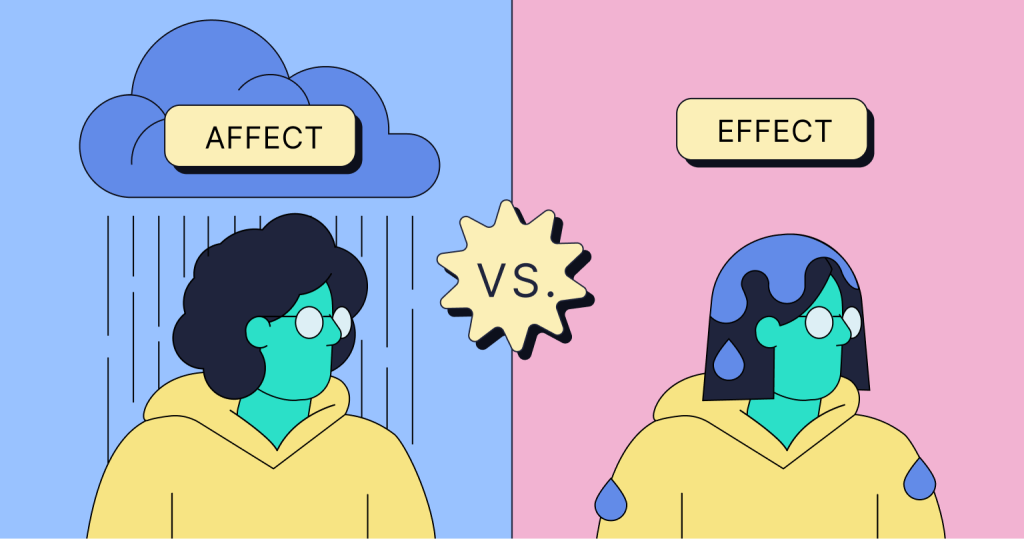Have you ever wondered why some words stick in your mind? It might be because of the way they sound.
Long ‘A’ words, like “rain,” “cake,” and “day,” have a unique impact on our language and how we communicate.
These words grab our attention and help convey ideas more effectively.
This blog post will explore the fascinating world of long ‘A’ words and their role in shaping our conversations.
Understanding Long ‘A’ Words

Long ‘A’ words are those in which the letter ‘A’ produces a distinct sound, similar to saying the letter’s name.
This sound is typically found in words like “cake,” “rain,” and “day.”
Understanding the long ‘A’ sound, a common vowel sound, is important for mastering English pronunciation and improving communication.
1. Key Characteristics of The Long ‘A’ Sound
The long ‘A’ sound is one of English’s most prominent vowel sounds.
Phonetically represented as /eɪ/, this sound is created by starting with the tongue in a mid-open position and then gliding it to a high-front position.
Understanding the phonetic details of the long ‘A’ sound is crucial for accurate pronunciation and improved communication skills.
2. Articulation Details
To produce the long ‘A’ sound correctly, the tongue should begin in the middle of the mouth, slightly lower than the midline.
As the sound progresses, the tongue moves up towards the roof of the mouth, near the front.
The jaw is slightly dropped at the start of the sound and rises slightly as the sound continues.
The lips start in a relaxed position and may slightly close towards the end of the sound.
Correct articulation is essential for producing a clear and distinct long ‘A’ sound, making speech more understandable.
3. Common Variations and Contexts
The long ‘A’ sound can occur in various positions within a word, such as the initial position (e.g., “ape”), medial position (e.g., “rain”), or final position (e.g., “day”).
The pronunciation of the long ‘A’ sound may vary subtly depending on its position.
Awareness of these contextual variations helps master the sound across different words and phrases.
Some common examples of words with the long ‘A’ sound include “bake,” “late,” “gate,” “plain,” and “main.”
It’s important to note that the same word can have different meanings depending on the context, such as “date” being used as a noun (a specific day) or as a verb (to go on a romantic meeting).
Less common examples of long ‘A’ words include “eighteen,” “neighbor,” and “vein.”
4. Learning and Practice Tips
To master the long ‘A’ sound, it’s essential to practice consistently.
Try repeating common long ‘A’ words and using tongue twisters that emphasize this sound.
Listening to native speakers and mimicking their pronunciation can also be helpful.
Various online resources, such as pronunciation guides and language learning apps, focus on vowel sounds and can help you improve your long ‘A’ pronunciation.
Remember, consistent practice is key to integrating the correct pronunciation into your everyday speech, making your communication more effective and clear.
Long ‘A’ Words in Modern Communication

1. Impact on Clarity and Emphasis
Long ‘A’ words can significantly enhance clarity and emphasis in speech.
Effective communication is crucial in various contexts, from everyday conversations to professional presentations, and the strategic use of long ‘A’ words can help speakers convey their messages more effectively.
Enhanced Clarity
The distinct sound of the long ‘A’ makes words easily distinguishable, contributing to phonetic clarity.
Clear articulation of long ‘A’ words helps listeners understand the speaker better.
For example, words like “day,” “cake,” and “name” are easily understood due to their clear vowel sound.
Sentences such as “We plan to take a vacation in May” are more comprehensible with properly articulated long ‘A’ sounds.
Enhanced clarity reduces misunderstandings and ensures the message is conveyed accurately.
Emphasis in Speech
Long ‘A’ words can stress important points in a conversation or presentation.
The elongated vowel sound naturally draws attention, making the word stand out.
For instance, saying “This is a ‘major’ achievement” or “We need to ‘maintain’ focus on our goals” emphasizes the keywords.
Speakers can use long ‘A’ words at key points in their speech to highlight critical information and vary their tone and pace when pronouncing these words to add emphasis.
Using long ‘A’ words strategically can help engage the audience and emphasize key messages.
Practical Applications
In public speaking, using long ‘A’ words can help maintain the audience’s attention and emphasize the main points.
Presenters should practice using long ‘A’ words in rehearsals to ensure clarity and emphasis.
Examples include “Our ‘aim’ is to create a sustainable future” or “The ‘data’ clearly shows a positive trend.”
In everyday conversations, incorporating long ‘A’ words ensures that points are clearly understood and emphasized.
Paying attention to pronunciation enhances clarity.
2. Usage in Different Contexts
Long ‘A’ words are remarkably versatile and are used across various forms of communication.
Understanding their usage helps in appreciating their role in different settings and can contribute to improving one’s communication skills.
Literature
In literature, authors often employ long ‘A’ words to create rhythm and enhance the flow of their writing.
The long ‘A’ sound can provide a melodic quality to poetry and prose.
For example, the phrase “The rain in Spain stays mainly in the plain” demonstrates how the repetition of the long ‘A’ sound creates a memorable and rhythmic effect.
In classic literature, authors like Shakespeare used long ‘A’ words to emphasize key themes and emotions.
Recognizing the use of long ‘A’ words in literature can deepen the understanding and appreciation of literary works.
Media
Long ‘A’ words are frequently used in the media for clarity and emphasis.
News anchors and broadcasters often use long ‘A’ words to deliver messages clearly and effectively.
For instance, “today” and “debate” are commonly used in news reporting and political discussions.
In advertising, long ‘A’ words create catchy and memorable slogans.
The distinct sound can attract attention and make the message more impactful, as seen in examples like “Save the day with our new product!” or “Amazing deals await you!”
Understanding how long ‘A’ words are used in media can enhance one’s presentation and public speaking skills.
Everyday Conversation
In daily communication, long ‘A’ words help articulate ideas clearly.
They can add emphasis to important points and make speech more engaging.
For example, phrases like “I can’t wait for the game tonight” or “Let’s make a plan for the weekend” demonstrate the use of long ‘A’ words in everyday conversations.
These words can make conversations more vivid and expressive, helping to convey enthusiasm, importance, and urgency.
Knowing how long ‘A’ words are used in everyday conversation can improve verbal communication and interpersonal skills.
Educational Settings
Long ‘A’ words are used as teaching tools to help students understand pronunciation and phonetics.
Educators use long ‘A’ words to teach vowel sounds and improve reading skills.
Knowledge of long ‘A’ words and their use in education can help teachers and learners effectively teach and learn English.
Psychological Effects of Long ‘A’ Words

Long ‘A’ words can significantly influence the emotions and reactions of listeners.
Understanding the emotional impact of long ‘A’ words can help in crafting more effective and engaging communication.
1. Positive Emotional Responses
Words with a long ‘A’ sound can evoke positive emotions and associations.
These words are often used to convey happiness, excitement, and positivity.
For example, “amazing” conveys a sense of wonder and admiration, “great” suggests something impressive or very good, and “celebrate” evokes joy and festivity.
Using long ‘A’ words strategically can enhance a message’s positive tone, making it more uplifting and motivating.
2. Negative Emotional Responses
Some long ‘A’ words can evoke negative emotions or highlight negative situations.
These words can be used to emphasize challenges or concerns.
For instance, “pain” highlights discomfort or distress, “frustrate” conveys feelings of annoyance or discouragement, and “hate” expresses strong dislike or aversion.
Being aware of the emotional weight of long ‘A’ words can help in managing the tone and impact of communication.
3. Contextual Influence
The emotional impact of long ‘A’ words can vary depending on the context in which they are used.
These words can be powerful tools for expressing emotions in literature, media, and everyday conversations.
For example, authors use long ‘A’ words to convey emotions and set the tone, as in the sentence, “The day was great and filled with joy.”
Advertisements often use positive long ‘A’ words to create an appealing message, such as “Amazing deals await you!”
In daily interactions, long ‘A’ words help express emotions clearly, like “I’m so happy you came!”
Understanding the context helps use long ‘A’ words appropriately to evoke the desired emotional response.
Conclusion
Long ‘A’ words play a significant role in shaping our language and communication. These words are used in various contexts, from literature and media to everyday conversations and educational settings, where they help convey ideas, evoke emotions, and engage audiences.
As we uncover the interesting world of long ‘A’ words, we can harness their power to improve our communication skills and make our messages more memorable.
So, the next time you encounter a long ‘A’ word, take a moment to appreciate its power and beauty.
Frequently Asked Questions
What is the Æ Sound Rule?
The æ sound is pronounced like the ‘a’ in “cat” or “apple.” It’s a short vowel sound.
What is the Rule for The Long a Sound?
The long A sound is pronounced like the letter name ‘A’, as in “cake” or “rain”.
What is the A_E Rule?
The A_E rule states that when ‘a’ is followed by a consonant and silent ‘e,’ it usually makes the long A sound.
When to Use Ai, Ay, or Æ?
Use ‘ai’ in the middle, ‘ay’ at the end, and ‘a_e’ when ‘a’ is followed by a consonant and silent ‘e’.
How Do You Pronounce Æ?
Æ is pronounced like the short ‘a’ sound in “cat”, “apple”, or “mad”.
